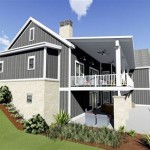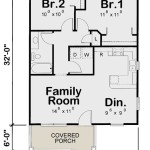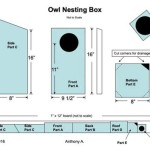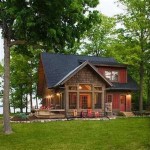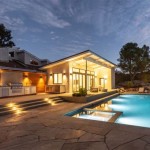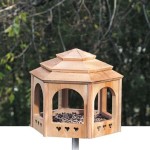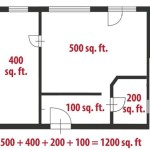How to Make a 3D Planet Model
Creating a 3D planet model is a multifaceted project encompassing aspects of art, science, and craft. The final product can serve as an educational tool, a decorative piece, or even a component of a larger diorama. The method chosen depends heavily on the desired level of detail, available resources, and artistic skill. This article details various approaches to constructing 3D planet models, ranging from simple and accessible methods for beginners to more advanced techniques for experienced model makers.
Choosing Materials and Scale
The initial step is determining the scale and the materials to be used. Scale dictates the overall size of the model and influences the level of detail that can realistically be incorporated. For a classroom project or a beginner’s attempt, a smaller scale is advisable. This allows for quicker completion and reduces material costs. Conversely, larger scales permit the inclusion of finer details such as mountain ranges, canyons, and atmospheric effects.
Several material options exist, each with its own advantages and disadvantages. Common choices include:
*Styrofoam balls:
Readily available, lightweight, and easy to paint. They are ideal for representing spherical planets. However, they can be prone to dents and require a sealant before painting to prevent the paint from dissolving the foam. *Paper Mache:
A classic and inexpensive option. It allows for creating custom shapes and textures. The process is time-consuming, requiring multiple layers and drying periods. The resulting model can be relatively fragile if not properly reinforced. *Clay:
Provides excellent sculpting possibilities for adding topographical details. Clay can be air-dry or oven-bake, each type having specific handling and curing requirements. Clay models can be heavier than other options. *3D Printing:
A technologically advanced option enabling the creation of highly accurate and detailed models. Requires access to a 3D printer and 3D modeling software. The cost can be higher depending on the printer and materials used. *Wood:
Offers durability and a solid base for complex models. However, shaping a sphere from wood requires significant woodworking skills and tools.The choice of materials should align with the desired outcome and the builder's comfort level. For example, a styrofoam ball covered in acrylic paint is a suitable choice for a basic representation, while 3D printing is preferable for a scientific replica with precise details.
Creating the Base Structure and Topography
Once the materials are selected, the next step involves creating the basic spherical shape and adding topographical features, if desired. The process varies significantly depending on the chosen method.
For styrofoam balls, the process is straightforward. If topographical features are desired, these can be added using lightweight spackle, modeling paste, or even crumpled aluminum foil glued to the surface. Care should be taken to distribute the added material evenly to maintain the spherical shape. Sanding the surface after the added material has dried is essential to create a smooth transition and a more realistic appearance.
When using paper mache, the process involves inflating a balloon to the desired size and covering it with multiple layers of paper strips soaked in a mixture of glue and water. Once the paper mache has thoroughly dried, the balloon can be deflated and removed. Topographical features can be built up using additional layers of paper mache or other modeling materials. This method allows for a gradual shaping of the planet's surface.
Clay models offer the most flexibility in creating topographical details. The clay can be molded and sculpted to represent mountains, valleys, and other surface features. Different types of clay have different working properties, so it's important to choose one that is suitable for sculpting small details.
With 3D printing, the topography is designed using 3D modeling software. Digital elevation data, if available, can be incorporated to create highly accurate representations of real planets. The software then generates instructions for the 3D printer, which builds the model layer by layer.
For wood, a lathe can be used to shape a wooden block into a sphere. Topographical features would need to be carved or sculpted onto the surface using woodworking tools. This approach requires significant skill and experience.
Regardless of the chosen method, it's crucial to consider the relative heights and depths of different features. Exaggerating these features slightly can enhance the visual impact of the model, especially at smaller scales.
Painting and Adding Atmospheric Effects
Painting is a crucial step in bringing the planet model to life. Accurate color representation is essential, and reference images of the target planet should be consulted. Acrylic paints are a popular choice due to their versatility, durability, and wide range of available colors. Before painting, the surface of the model should be primed to ensure proper adhesion and prevent the paint from being absorbed unevenly.
For planets with varied surface features, techniques such as dry brushing, washes, and stippling can be employed to create realistic textures and highlights. Dry brushing involves applying a small amount of paint to a dry brush and lightly dragging it across the surface to highlight raised areas. Washes involve diluting paint with water or a medium and applying it to recessed areas to create shadows and depth. Stippling involves using a brush with stiff bristles to apply small dots of paint, creating a textured effect.
Representing atmospheric effects can significantly enhance the realism of the model. For planets with atmospheres, such as Earth or Venus, airbrushing can be used to create a subtle gradient effect, blending the colors of the surface with the colors of the atmosphere. Translucent paints or glazes can be used to create a hazy or cloudy appearance.
For planets with prominent cloud formations, cotton balls or synthetic batting can be glued to the surface and painted to resemble clouds. The edges of the clouds can be blended with the atmosphere using an airbrush or dry brushing techniques.
Adding details such as polar ice caps, deserts, and oceans can further enhance the accuracy and visual appeal of the model. These features can be painted using appropriate colors and textures, taking care to match the appearance of the real planet.
Finally, a protective clear coat can be applied to the finished model to protect the paint and add a glossy or matte finish. The choice of finish depends on the desired appearance and the characteristics of the planet being represented.
The accuracy and care devoted to the painting process directly impact the final product. Researching the colors and patterns of the target planet is crucial to achieve a realistic and visually appealing representation.

How To Make A Diy 3d Solar System Model Mombrite

How To Make A 3d Solar System Model For Kids Planets School Project Time 4 Tv

How To Make A Diy 3d Solar System Model Mombrite

How To Make 3d Solar System Model Project For Students

How To Make A Diy 3d Solar System Model Mombrite

How To Make Solar System Project 3d Model Without Balls

How To Make A 3d Solar System Sciencing

3d Paper Mobile Planets Craft Template Solar System Easy Peasy And Fun

Rocket Launch Create A 3d Solar System Competition Space Week

How To Make 3d Solar System Model School Project Science
Related Posts


